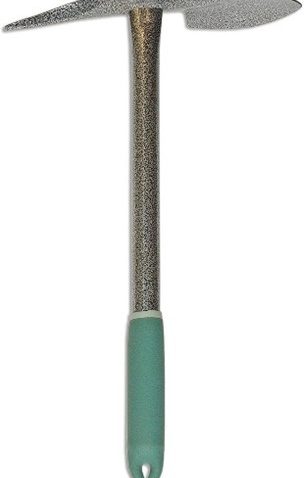Perhaps a dozen years ago, LaVille and I planted 12 different fruit trees. We followed the advice of the Dave Wilson Nursery and planted them in 3 groups of 4. There were 4 cherries, 4 nectarines, and a group of 3 pluots with a plum. Each group was growing on the same root stock. The planting pattern was a square with trees 2 feet apart. The goal is to have 4 stunted trees with a varied ripening sequence. Trees were pruned to keep the center of the group open and the height limited to a comfortable harvesting level. Sounds promising, right?
The nectarine trees never produced decent fruit. It may have been related to the fact that I was never able to control the peach leaf curl. So after probably 5 years, I removed them. This wasn’t too difficult, because the root systems weren’t huge.
The cherry trees were doing just fine. Sure, the jays took their toll, but we did have days of human grazing. Then the spotted wing drosophila arrived. The treatment was to apply a spray every 5 days beginning as soon as the fruit showed a blush of color. A couple years of futile effort lead to tree extermination. This was not easy as the biggest trunk was probably 8 inches across. My tools this time were a hand saw, shovel, and hatchet. I won the battle, but there were times when the desired outcome was in doubt.
The 3 pluots and plum trees produced mixed results. The Montgomery plum was just OK. 2 of the pluots produced very little fruit. The Dapple Dandy produced an abundant crop each year. The fruit was large and had a marvelously tasty, sweet flavor. Then disaster struck. Remember that the center of the group is pruned to keep it open, so all of the fruit is produced on the outside of the grouping. Well, even after extensive fruit thinning, the Dapple Dandy had so much fruit on one side, that the trunk cracked open. That was also the straw that broke the camel’s back. All 4 trees were sentenced to termination. Being now an experience henchman, I added 2 tools to my arsenal. Most importantly was the reciprocating saw. It easily chopped off branches and shortened the trunk. It was indispensable for cutting through the roots which were large and intertwined with the roots of the other trees. Not only that, but unlike the cherry trees, these trees had a tap root which required me to excavate extensively to gain access to them. I found that a planting pick was useful for clearing soil away from roots to expose them for the saw blade. It is unavoidable to keep the saw blade away from the soil. I fortunately had bought a package of 5 9” blades, because the soil really dulled them fast. You can tell a blade needs replacing when it not only doesn’t cut, but the friction of the dull blade starts producing smoke. Even with these tools the task was difficult. I could only manage one tree per day.
In the end I did, of course, prevail. Now there is room for planting more irises, which is a good thing as LaVille has probably 30 or 40 growing in gallon pots. 
Now, concerning tools, I have discussed both the transplanting shovel which I used and the reciprocating saw in previous articles. The saw is a must if you have serious tree work to do. I would recommend the little light weight planting pick if your soil is light. I have also found it useful for digging shallow trenches to bury drip lines. Most similar models are heavier and have a squared off chopping blade. The Planting Trenching Digging Garden Hand Tool from Amazon pictured below is like the one I used.
So . . . what does all of this have to do with hating trees? “Hate” is perhaps too strong a term for my attitude toward trees, but you can perhaps understand why I have a somewhat negative attitude. No one enjoys failure—least of all me.
Stan, The Tool Man
